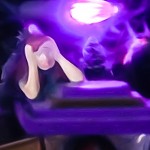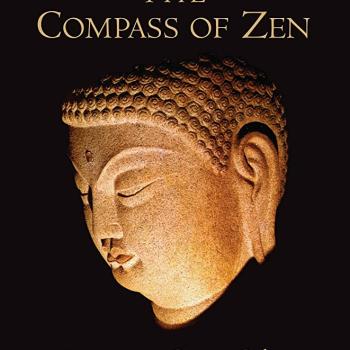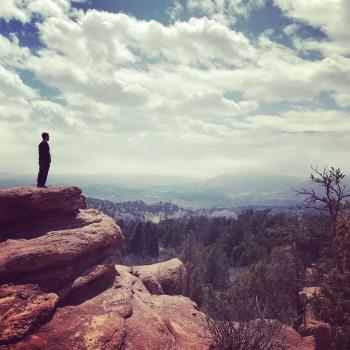A few months ago I took my seven year old stepson to meditation with me. I don’t take kids to meditation unless they ask to go. I’m sure there are plenty of people out there that would NEVER take a child to a meditation event and I do understand that. But I believe that, as mindful parents, we should share the practice with them if they’re interested. Some people believe kids can’t really get much benefit from meditation practice and I really disagree with that. A long time ago I used to teach meditation to kids. Sometimes I think about doing that again.
Anyway, he was determined to attend. I don’t know why. There are four children in our house and he’s the only one that seems interested. He has gone in the past and (to my surprise) participated in the whole meditation. An hour of sitting still is a long time for anyone, if we’re honest.
But, although he really wanted to go, he also brought some activities. He said, “Just in case I get bored.” He brought some Dogman books and a notebook for writing and drawing.
I wasn’t leading the practice. I had invited a zen monk named Thich Tam Cu to come lead for the night. He did a great job, by the way. So, I had the opportunity to just be a participant in the meditation practice, instead of leading.
Thich Tam Cu is someone I don’t know very well. He’s from the American South and many years ago he was in the United States Navy. He’s a Zen monk and hospital chaplain now. He’s student of Sunyananda Dharma who, a long time ago, was once my teacher. He’s been studying with him way longer than I did and is still studying with him today.
Whereas I decided a long time ago to take my teaching in a non-traditional direction, Thich Tam Cu did the opposite. He wore a yellow robe when he led meditation, because he wears robes when he teaches. He’s actually not as traditional as I thought he would be, but more traditional than I am. He uses humor just like I do, which I didn’t expect.
It seems like I swear and talk about memes, drinking, and how fucking hard it is to start and maintain a consistent meditation practice in all my dharma talks. Not traditional, a little different. I’d rather be your friend and inspire you than be your teacher.
Anyway, what I discovered was that his style is similar to mine. That time I spent training with his teacher may have had more influence on me than I realize. Who knows.
Maybe ‘traditional’ is just a word I’m attaching importance to that isn’t there. I’m probably not as different as I think. If I’m honest, for a second there I thought to myself, “Maybe I should get the robes out of the back of my closet…”
Anyway. I was there and we were sitting, doing a very similar practice to the one we do when I lead, presented by this monk in a very similar way to the way I present it. 30 minutes of meditation, just like we do when I lead.
My stepson sat with me a few minutes. Then he left to go across the room where he had his bag full of activities. It’s a big room, he was pretty far away.
We were sitting there doing the practice and I heard this ripping sound. Paper getting slowly pulled out of a notebook. Then, I heard some other sounds. He made a paper airplane and he was throwing it. He was, however, still being quiet, as quiet as one can be when throwing a paper airplane.
At first I thought, “Why the hell is he throwing a paper airplane? He knows what we’re doing here! He’s going to bother everyone.”
I was not mad, but I was irritated.
And I decided, since we were meditating, to bring attention to that irritation.
And I realized two things.
First of all: No one cared but me. No one even noticed.
AND
He’s seven years old. He far exceeded all expectations for a 7 year old boy, as far as not bothering anyone. Between the meditation and the discussion (which was a Q &A) we sat there for an hour. That’s a long time for a kid to be quiet and all he did was make a paper airplane. (!)
And that’s when I found equanimity. In truth, I was only irritated for a moment. A moment was all I needed. That’s what meditation really gives us, I think. A little extra space between thoughts, or between stimulus and response, or a chance to reflect mindfully and stop a growing irritation. This is something that happens to all of us often. Some nonsense thing happens and we make it a bigger problem in our minds that it really is. We get bothered by so many things. The poet Charles Bukowski said, “We are flattened by trivialities, eaten up by nothing.” I really like that quote.
Would I have found equanimity if I wasn’t meditating at the time? I don’t know. Everything was quiet so it was really easy for me to hear the crafting of a paper airplane. In a more active day-to-day situation I may not have even noticed, and I wouldn’t have had that expectation that I was putting on him to be quiet. And the expectation I was putting on the room to be a quiet place.
The truth is that in meditation we’re learning how our minds work. We’re learning to see those gaps between thoughts. And when we learn how to do it on the cushion, the hope is that we strengthen those pathways in our minds so we can also do it when things happen off the cushion. The training we get in meditation is supposed to help us when we’re not meditating.
Otherwise, why are we doing it?
So, that’s my story.
A real and personal lesson. The gaps are really important. The space between thoughts. If we can get handle on that, we’ll be a lot happier.












